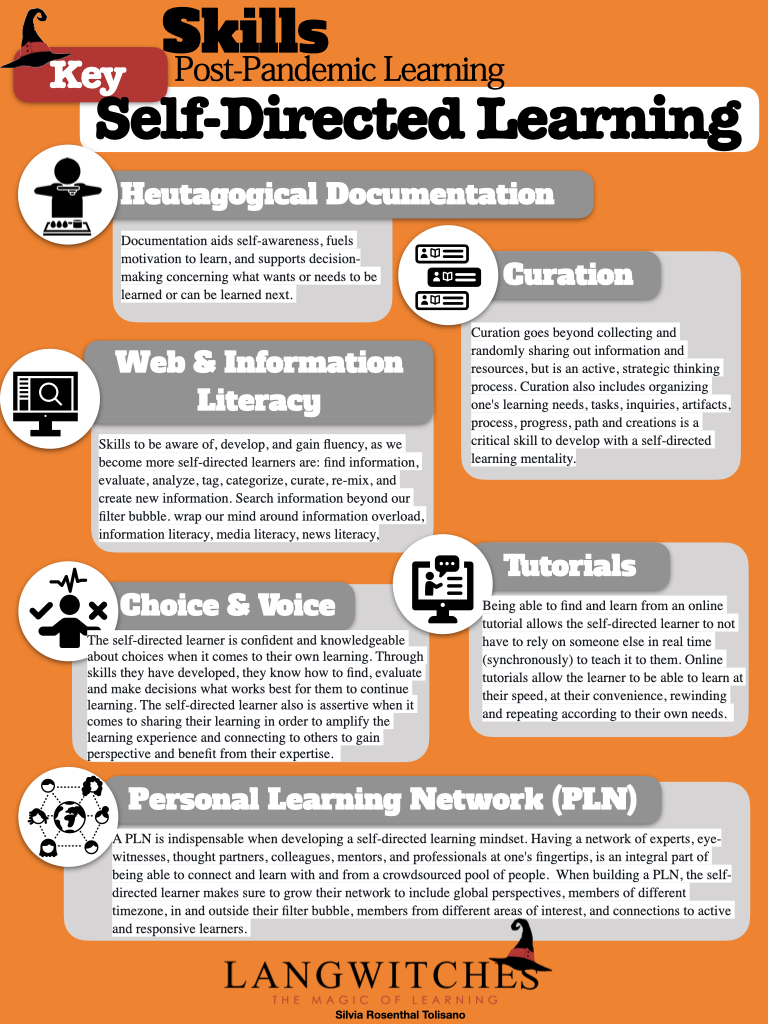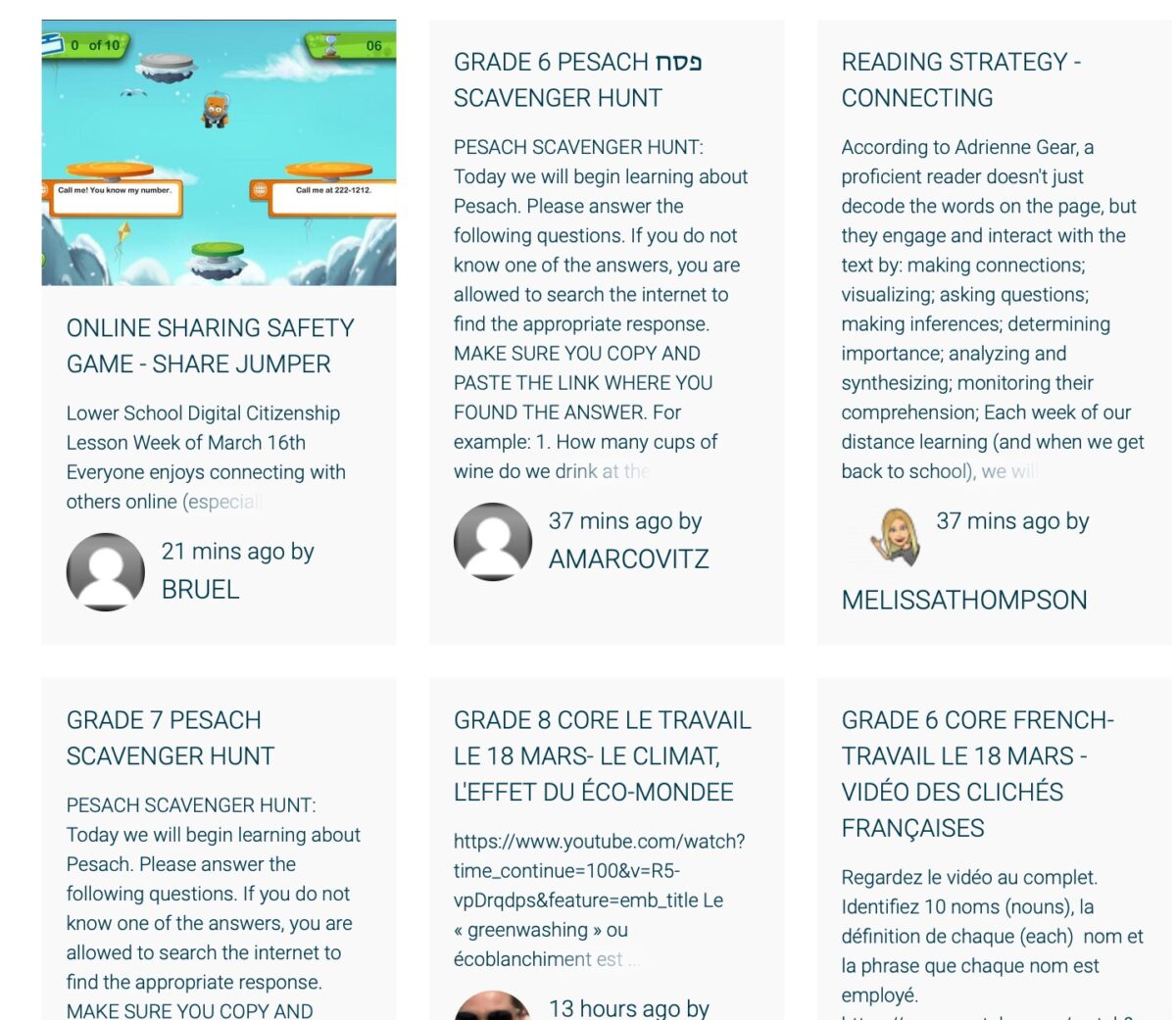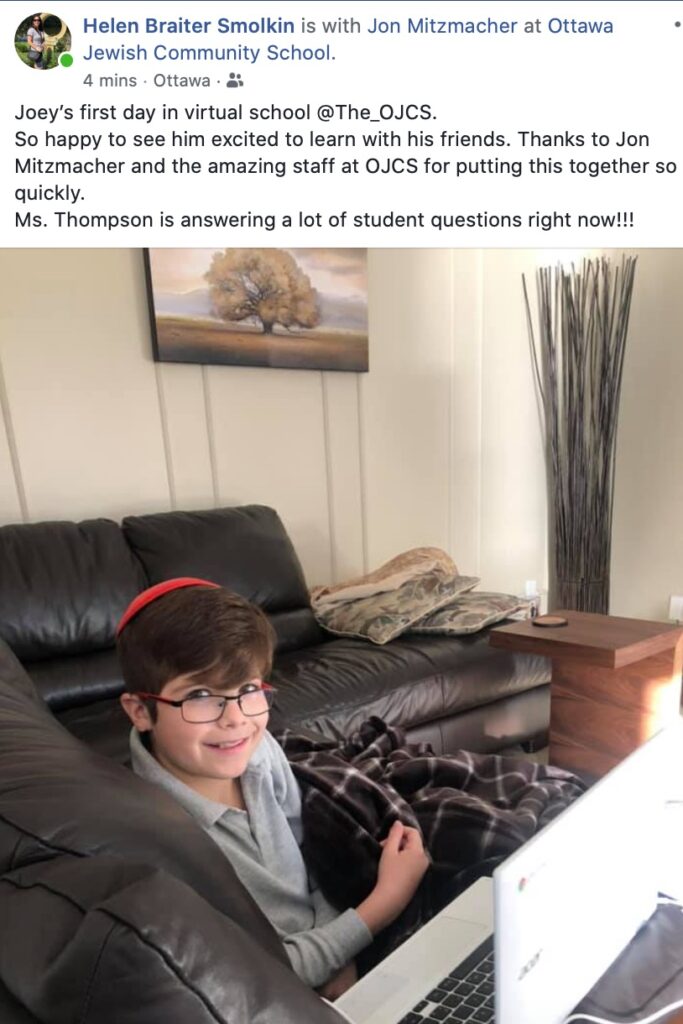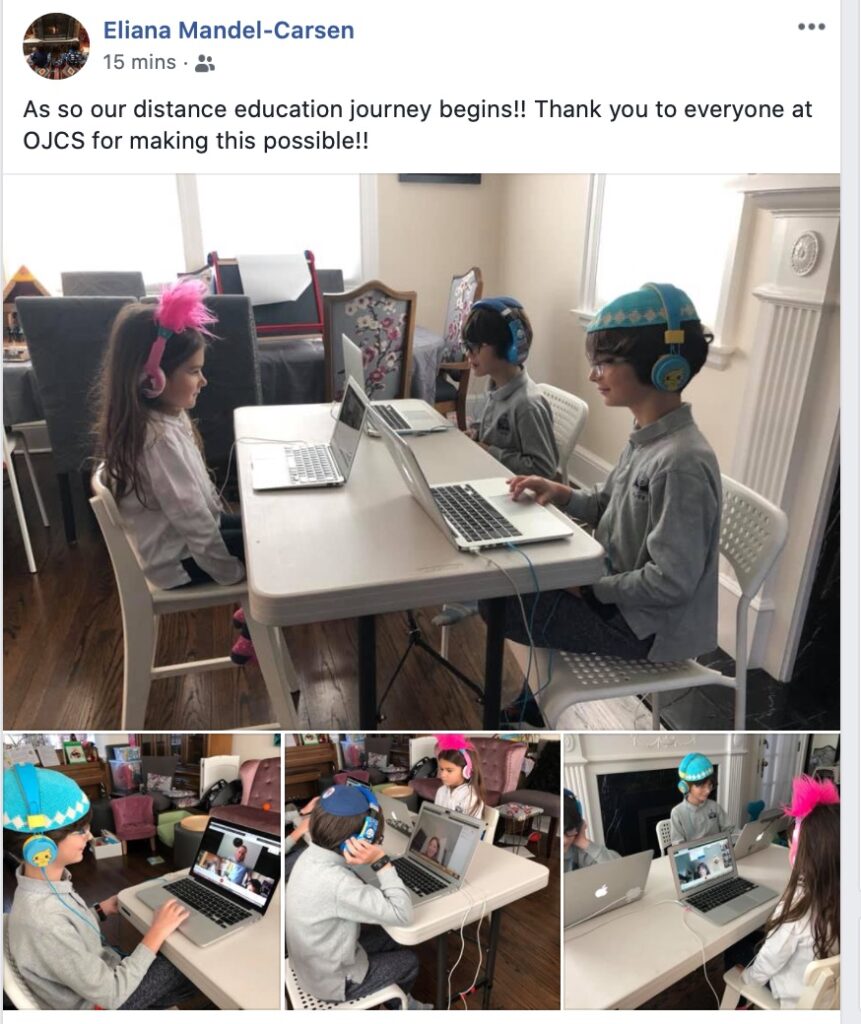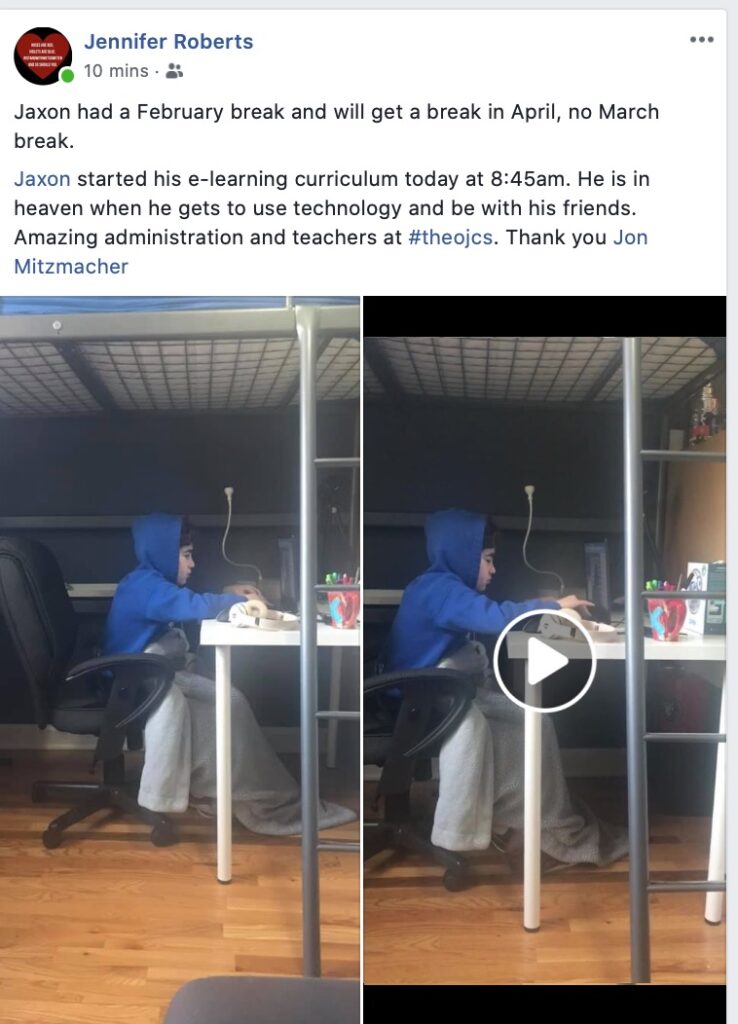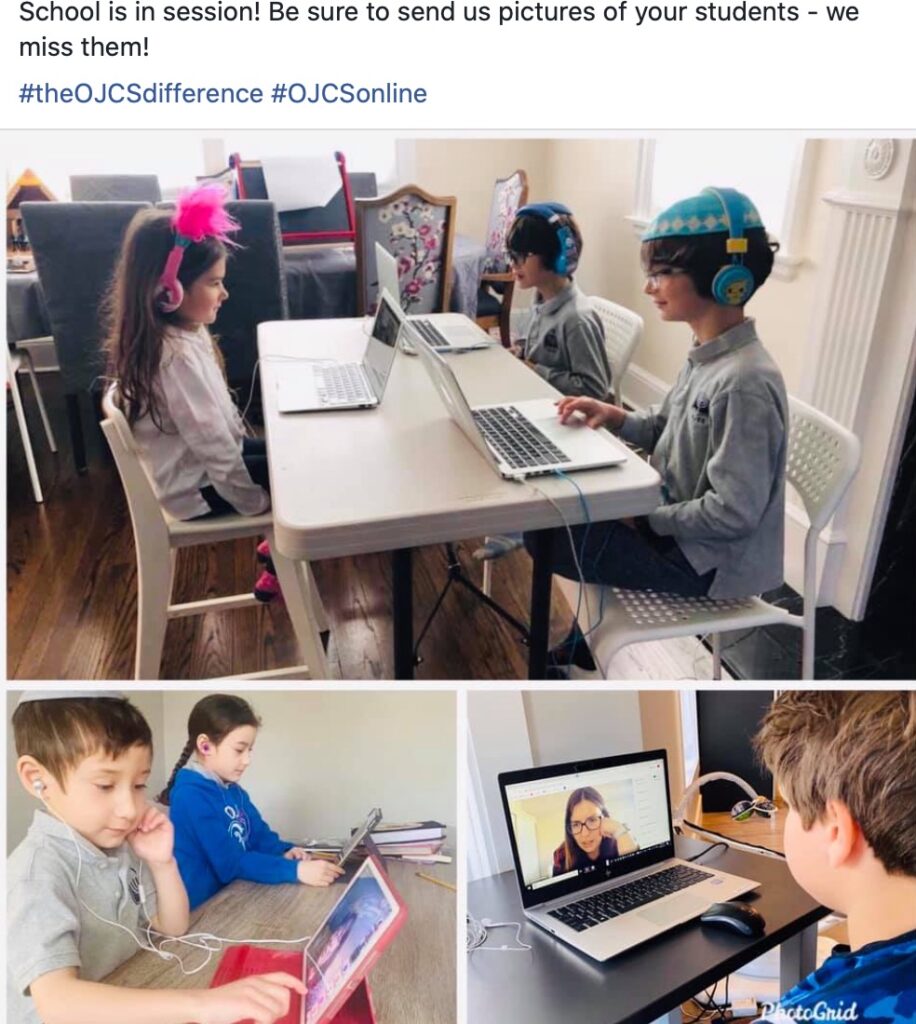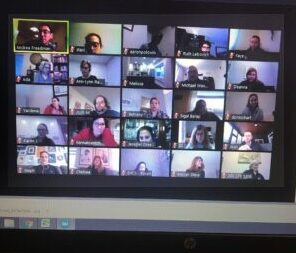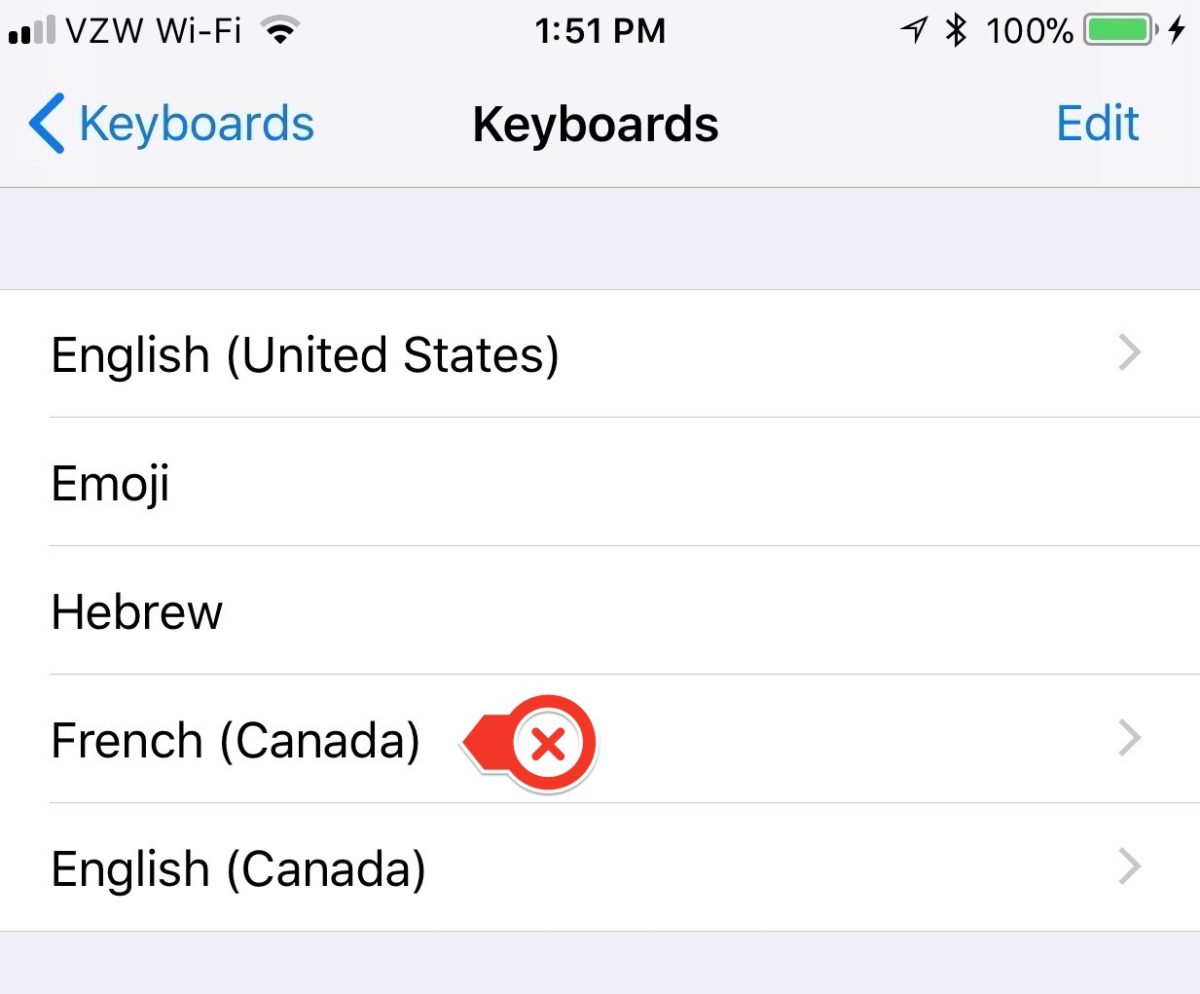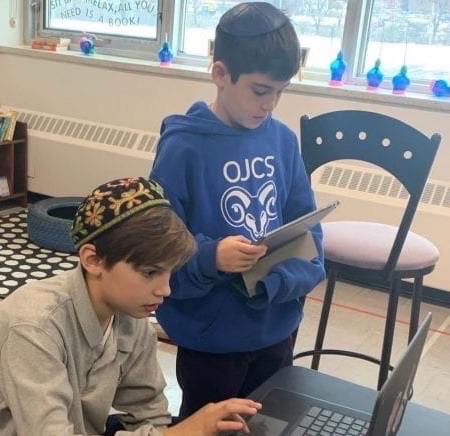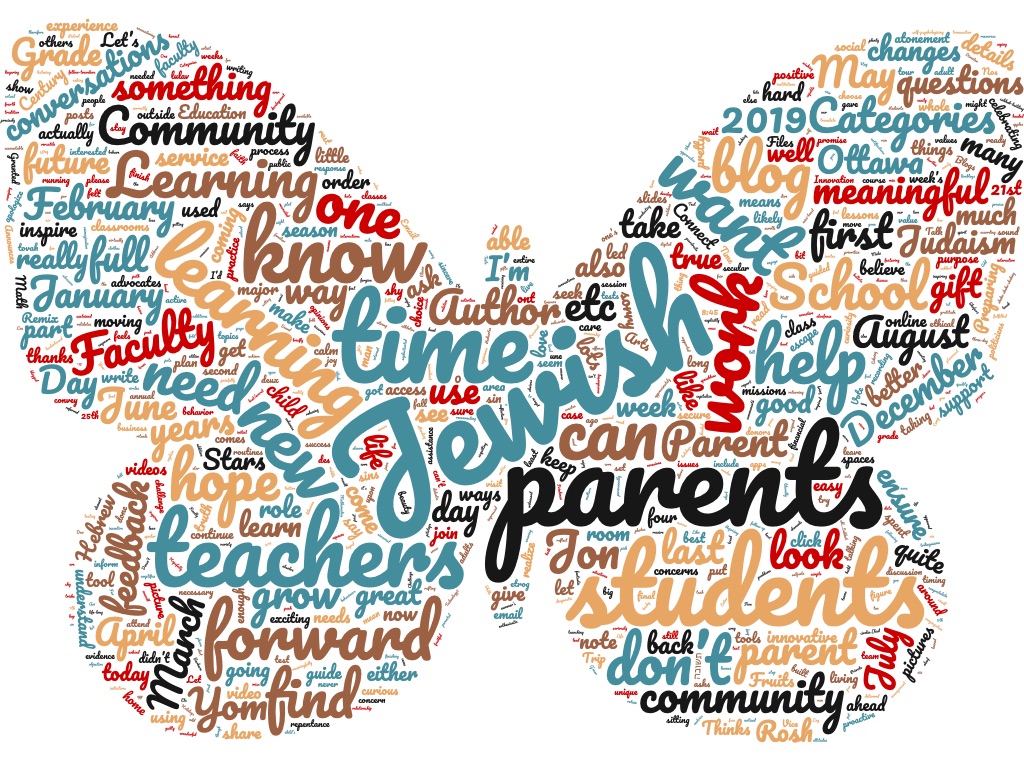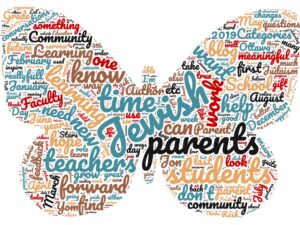Phase II of the Ottawa Jewish Community School’s Distance Learning Program launched on Monday, April 20th upon our return from Passover Break. “Phase II” came after both a “Soft Launch” and a “Phase I” and each iteration was developed based on feedback from student/parent/teacher surveys, shared experiences from schools on similar journeys (especially the ones a few weeks ahead) and best practices from educational experts. Each phase has us moving farther from simply trying to reproduce brick-and-mortar schooling in a virtual context and moving closer to creating meaningful learning experiences through distance learning.
Although the spectra on which each calibration has been based – live experiences/recorded experiences, synchronous/asynchronous, teacher-directed learning/self-directed learning, group learning/independent learning, device-dependent learning/device-free learning, etc. – remain the same, we believe that each new phase has fine-tuned the program so that the highest number of students can find the highest degree of success within the range. We know that with each family situation and each child’s learning style being highly personal that there are no one-size-fits-all programs. We believe that we have landed in the right place – for now – and that our continuous seeking of feedback and ongoing flexibility will allow for the successful navigation of individual concerns.
We don’t know when we will return to school. (Technically, the current restrictions end on May 4.) We developed and launched Phase II to accommodate schooling through the end of the school year. We would be thrilled to return sooner. We are hopeful that the beginning of the 2020-2021 school year will take place in our classrooms. We know that at some point in the future that we will return. But as one of my gurus in the field Heidi Hayes Jacobs recently said,
We have to start thinking about how we don’t go back to school, but how we go forward to school.
This quote was brought to us by our friend and colleague Silvia Tolisano, whose name you may recognize because she was one of the consultants who worked with our faculty last year on innovative pedagogies and documentation of/for/as learning, who facilitated our April Faculty Meeting this week. And like every professional development experience with Silvia (and I am lucky enough to have had a decade’s worth across two schools and four organizations), our teachers and administrators came out of it with just the right blend of feeling overwhelmed and inspired. “Overwhelmed” because Silvia is a fountain of information, pedagogies, ideas, techniques and tricks that seems impossible for any one person to learn, let alone master. “Inspired” because Silvia gives you permission to dream big dreams, encourages you to see challenges as opportunities, and urges you that the future is right around the corner with our children deserving nothing less than an education that will prepare them for their future success.
This extraordinary moment we are living, teaching and learning through will eventually end, but it would be a huge mistake to go back to school as it was when we have an opportunity to go forward to school as it ought to be. This moment, however long it lasts, is a challenge, but it is also an amazing opportunity to try learn and to try and to fail and to succeed. We are only (!) in our fourth week of distance learning, but I feel very strongly that there are five clear ways that we will want to go forward to school.
Amplifying Quiet/Introverted Voices
This is something that I recently blogged about, so I won’t repeat myself here. I will simply say that I continue to find just in my own (limited) teaching and engagement with blogs and blogfolios that the use of chat rooms, the facilitation of Google Meetings with clear and obvious rules for muting and speaking, and the use of self-recorded audio and video continues to allow me to see facets of our children’s personalities and depth of thought that would surely be lost in a healthily noisy classroom context. The feedback from teachers bear this out. Distance learning may have forced us into these techniques, but our core values – our North Stars – of “each being responsible one to the other” and “we learn better together” require us to continue to amplify quiet voices when we go forward to school.
Developing Self-Directed Learners
This category comes directly from Silvia and was the focus of her time with our teachers this week. Distance learning – as many of our parents can vouch for – is helped tremendously when students have the skills necessary to be self-directed learners. And these skills are not exclusive to certain grades or subjects or even learning styles. Our teachers have already begun thinking about how the skills you see below can make as much sense in a Kindergarten English lesson as they can a Grade 4 French lesson as they can in a Grade 8 Hebrew lesson.
One could argue (and one has!) that the only real aim in schooling is being sure that students are capable of being able to learn how to learn. What the move to distance learning forced on us was explicitly teaching these skills to students who not have adequately mastered them yet. We are making up for lost time now out of necessity. But we cannot truly embody our core values – our North Stars – of “We own our learning” unless we embed these skills more deeply in our curriculum when we go forward to school.
Digital Citizenship
Digital Citizenship is already something we invest a great deal of energy in at OJCS because of what we believe to be true about teaching and learning. However, the shift to distance learning has revealed some gaps and some delays in our workshops and curriculum. Our teachers, working together with our amazing Librarian, Brigitte Ruel, are filling those gaps in the present and will work to make them permanent features of #TheOJCSWay when we go forward to school.
Personalized Learning
Almost more than anything else, the move to distance learning has proved the necessity and the power of personalized learning. We have no choice, but to lean into individualized instruction, personalized curriculum, and self-directed learning. We can’t live our North Star of “a floor, but no ceiling” without fulfilling this promise – that we will know each student in our school well enough to lovingly inspire them to reach their maximum potential academically, socially, and spiritually. To do that well, to do that all for that matter, requires you to spend meaningful time building relationships. It can be hard to do that in a crowded classroom, but its importance comes screamingly clear through distance. The amount of time we are now spending in direct communication with students and parents about their learning, the care that is now being put into personalized learning programs will help ensure that when we do go forward to school that we will come that much closer to treating each student as if they have unique and special needs…because they do.
Strengthening (Global) Connectedness
Jewish day schools in general and OJCS in particular emphasize global connectedness. We’ve always maintained connections to schools in other countries and to personalities from other cultures. We leverage those relationships to speak in our three languages, to engage in active citizenship, to perform acts of social justice and lovingkindness, to participate in our city, provincial and federal discourse and to foster our love for the People, Land and State of Israel.
In a time of social distancing, however, not only have we had to lean on our global connectedness, but we have had to learn how to foster local and school connectedness through platforms as well. We cannot live our North Stars of “ruach” and “being on inspiring Jewish journeys” during a time of distancing without it. When we gather as a community for a virtual Family Kabbalat Shabbat or our students learn with and from a Holocaust survivor or when we celebrate Israel’s independence as part of a global audience, we feel the power of a connected community.
But when we go forward to school, what I’ll be thinking about is how much joy our students have each (virtual) day when they get to see each other’s smiling faces. How can we use what we have learned about connectedness when distance was imposed on us all, to address school and community needs when distance is required for a few? How could we incorporate our sick classmates into daily learning? How could we incorporate parents or grandparents who are unable to be physically present, but want to be connected and involved into the life of the school?

Sooner than later – hopefully sooner! – we really will be returning. We look forward to enjoying a hot dog and the physical company of new and returning families…at the 2020-2021 OJCS PTA Welcome Forward BBQ.
Ken y’hit ratzon.


